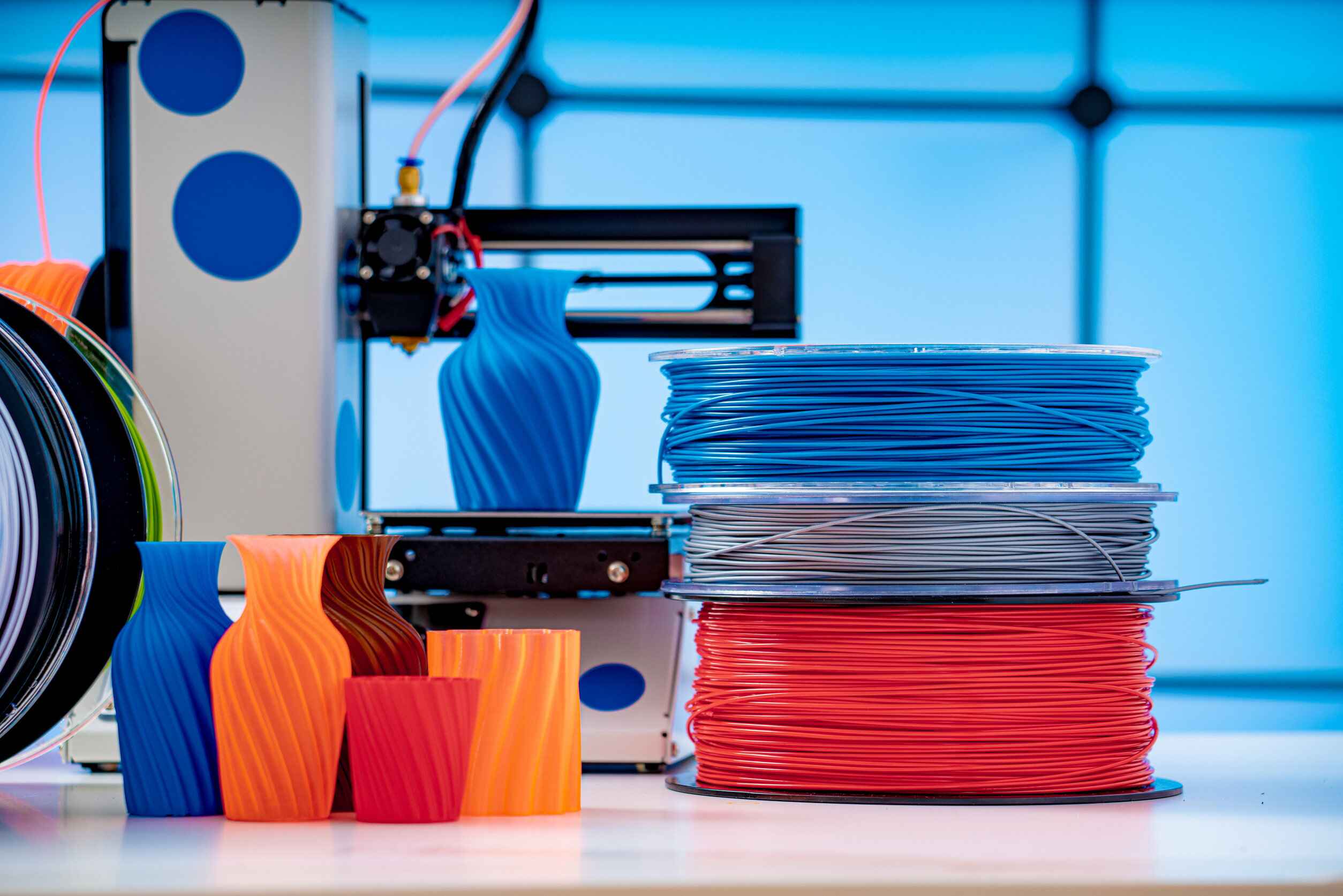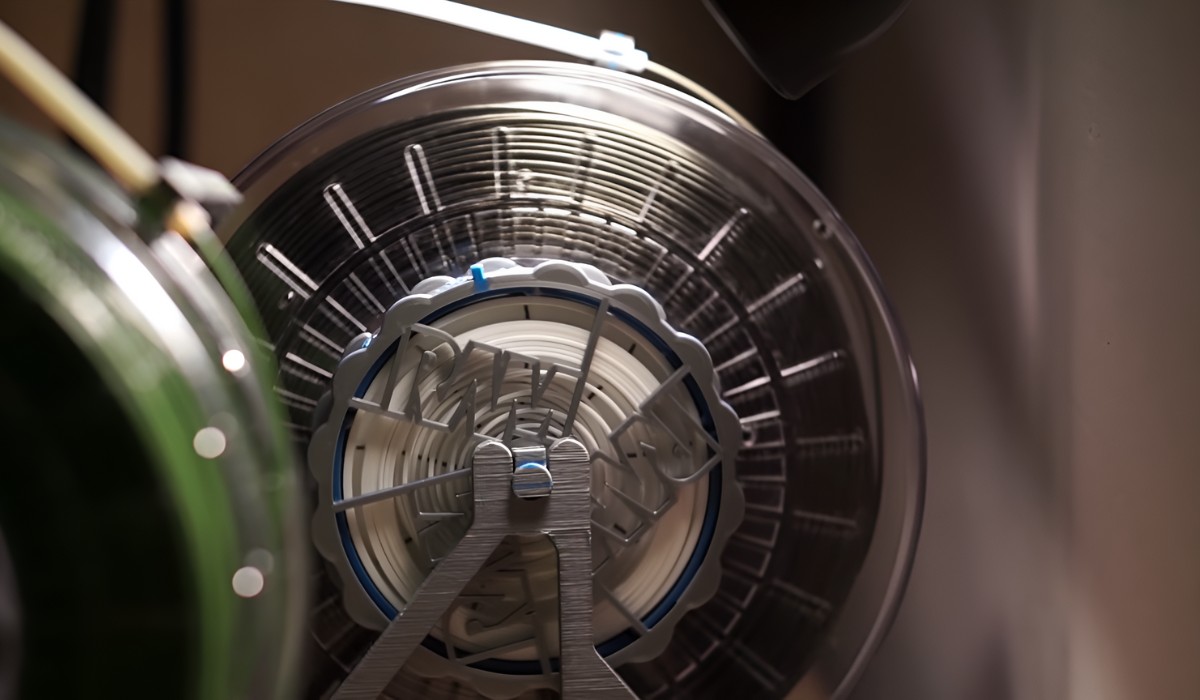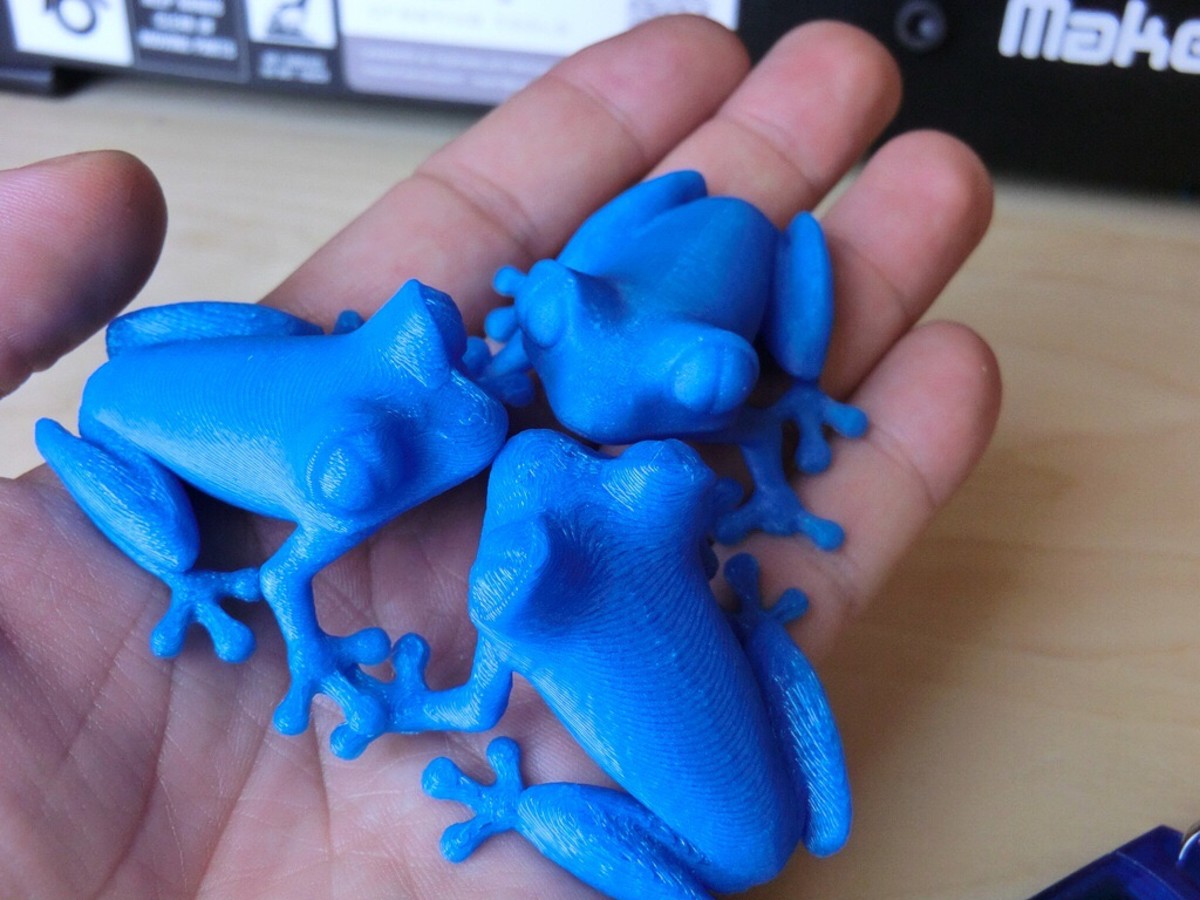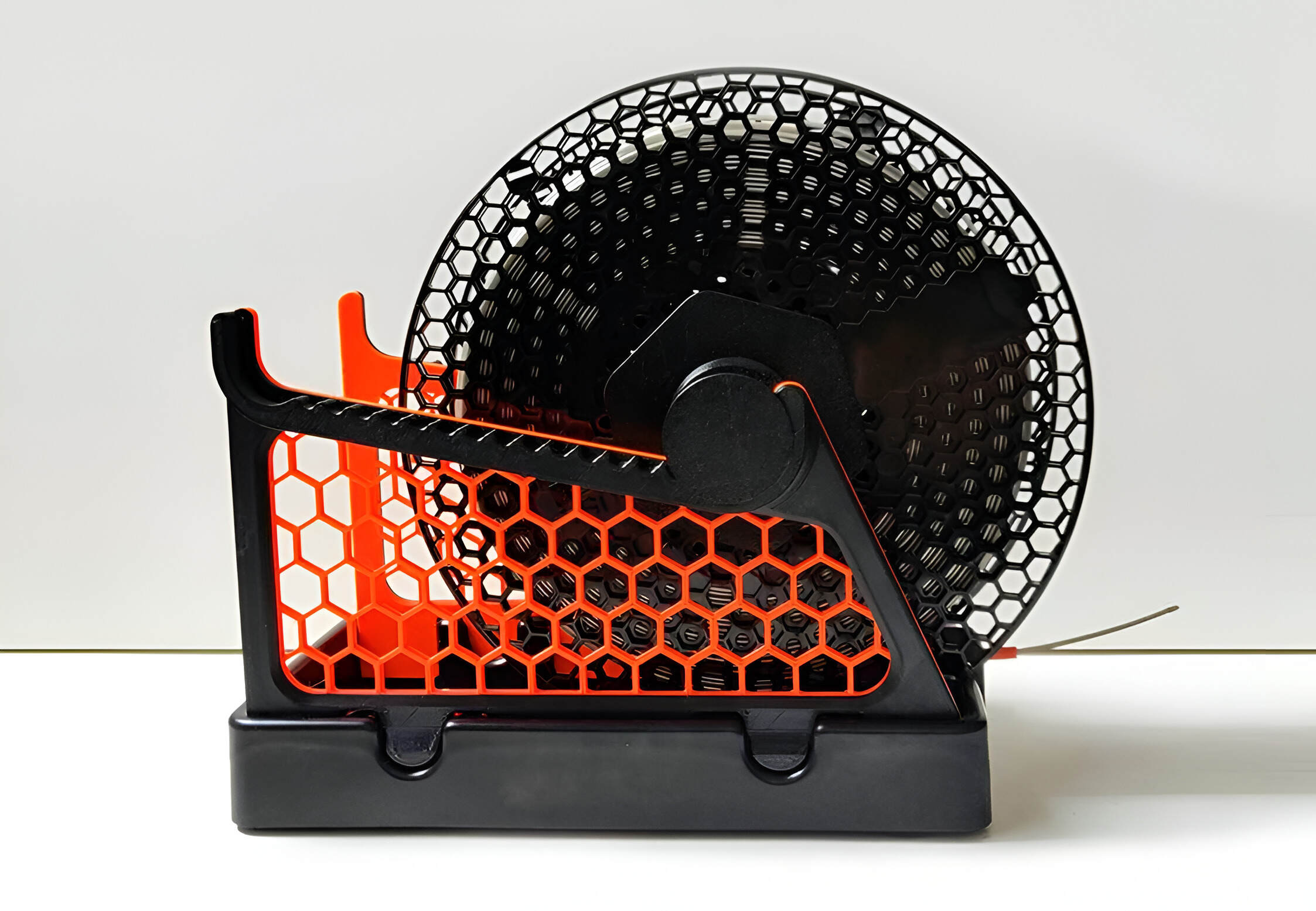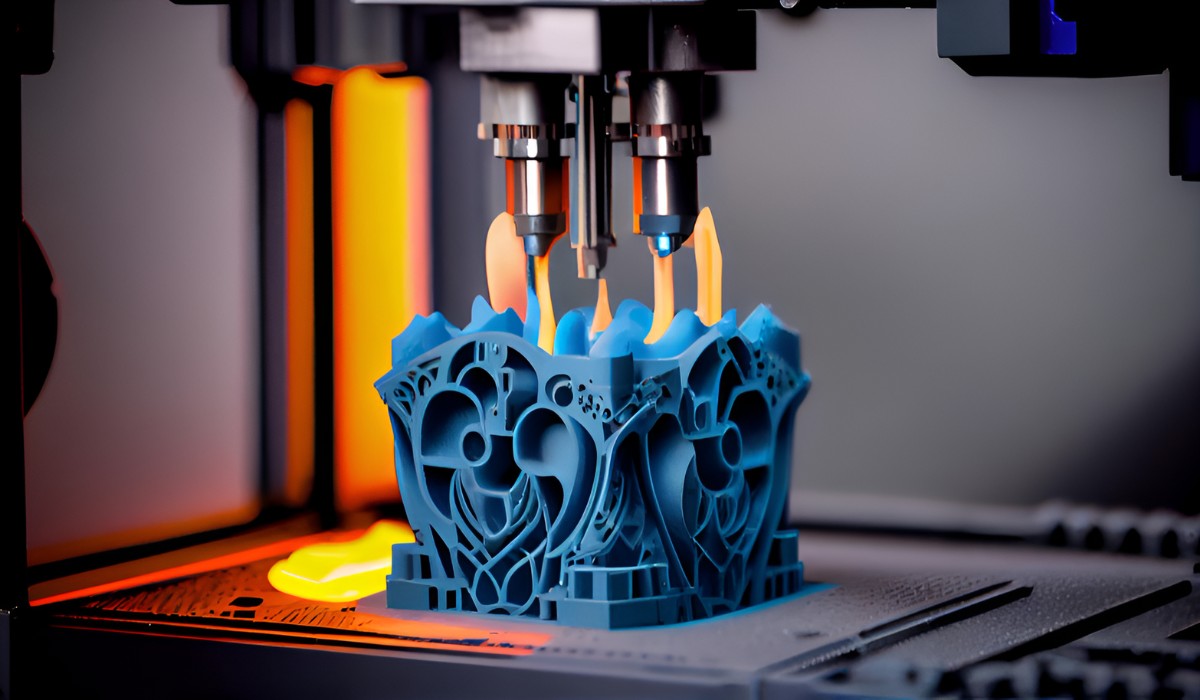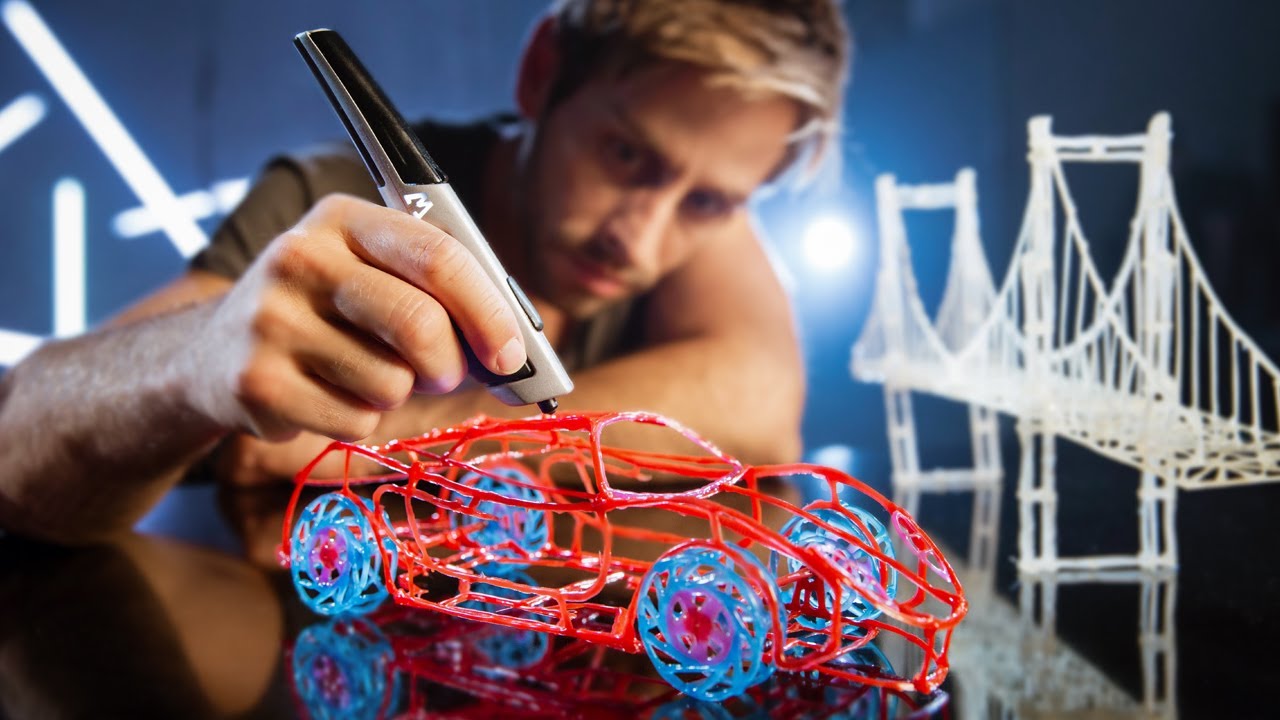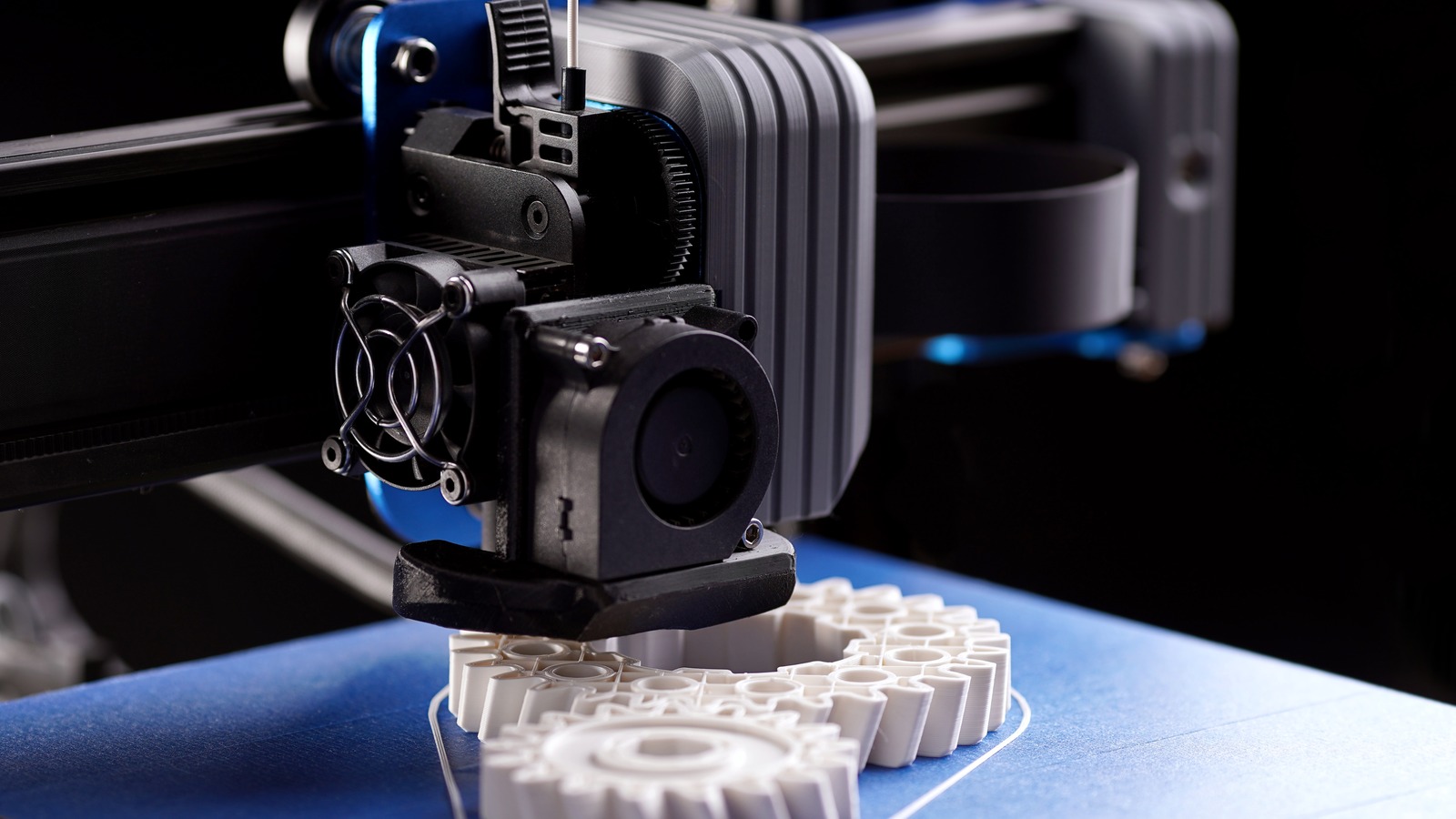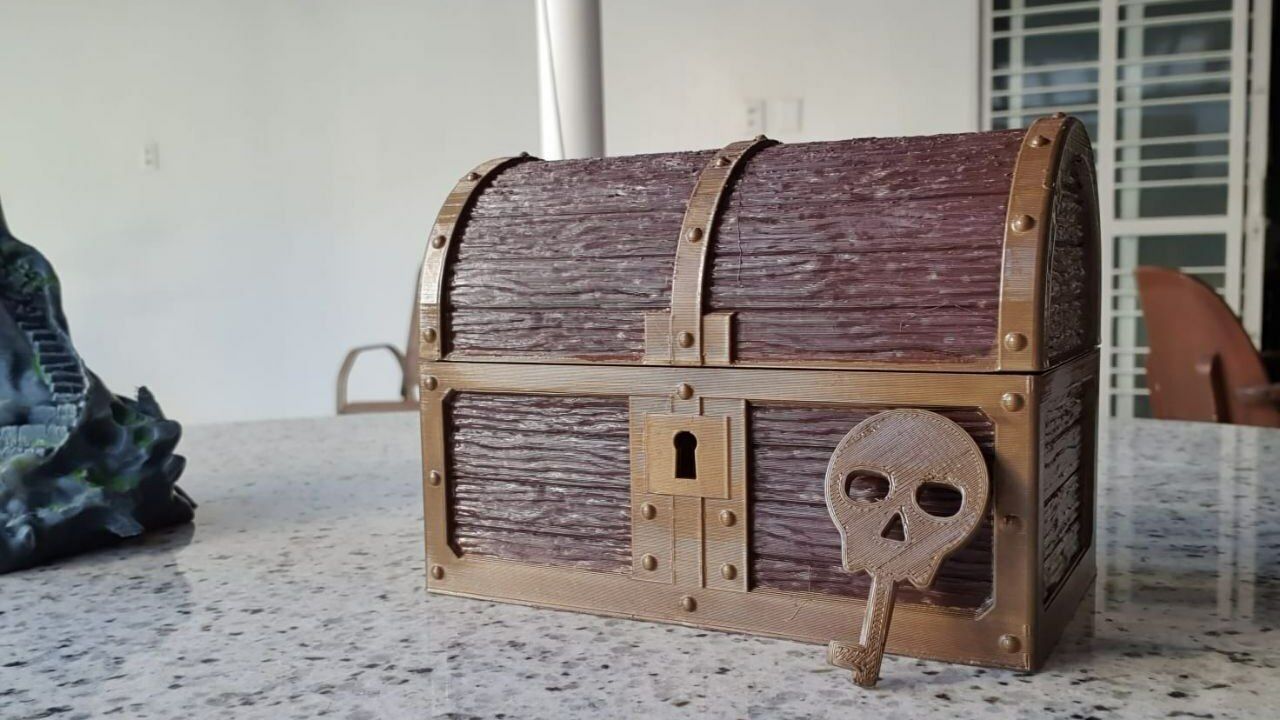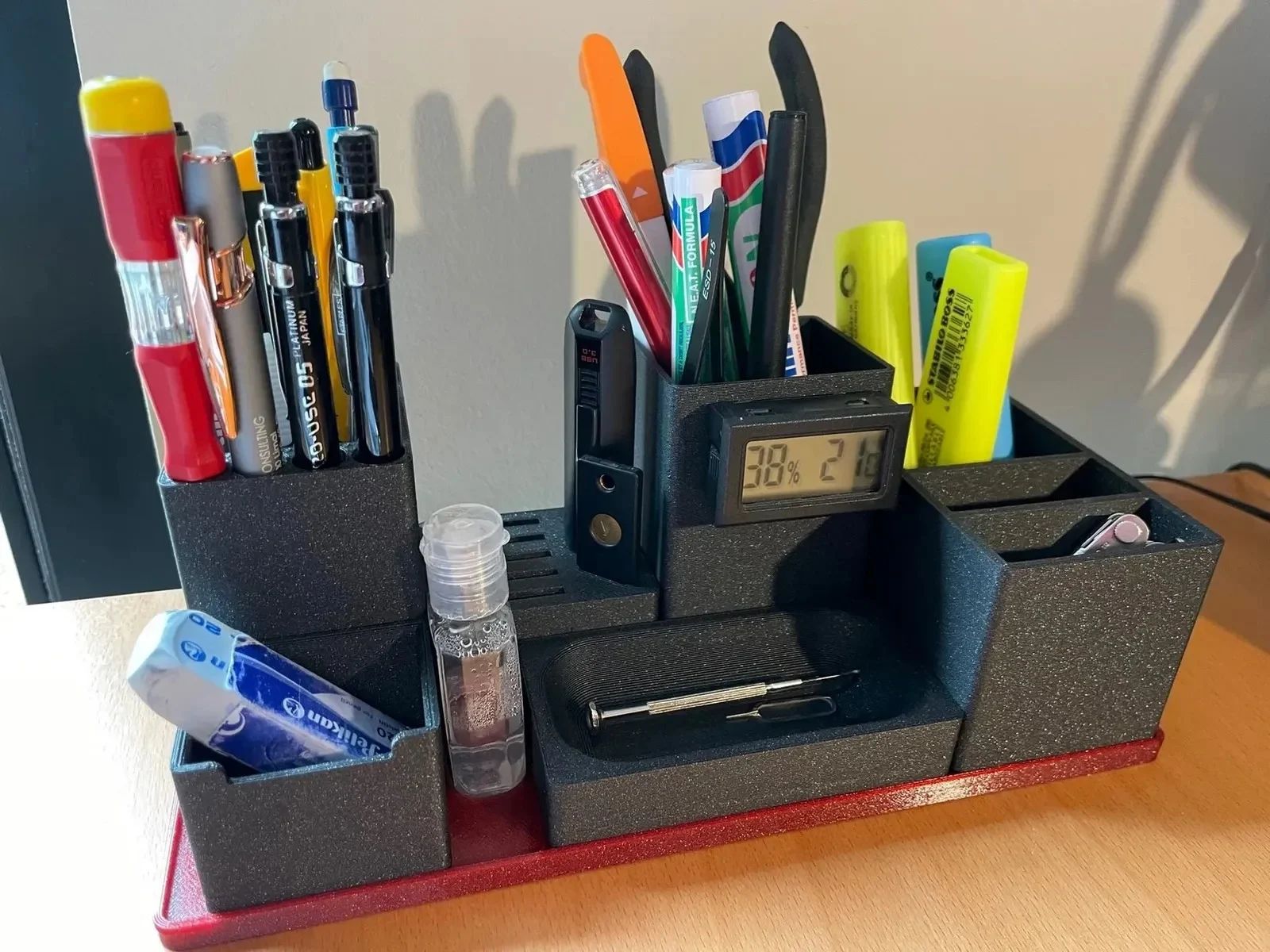Introduction
3D printing has revolutionized the manufacturing industry, allowing objects to be created layer by layer with incredible precision. One key aspect of 3D printing is the material used, which determines the strength, durability, and quality of the final printed object. When it comes to the types of plastic used in 3D printers, there are several options to choose from, each with its own unique properties.
The choice of plastic for 3D printing depends on various factors, such as the intended use of the printed object, the required level of detail, and the budget. It is important to understand the characteristics of different plastics in order to select the most suitable one for your specific project.
In this article, we will explore some of the commonly used plastics in 3D printing, including PLA, ABS, PETG, TPU, Nylon, and PVA. We will discuss their key features, benefits, and applications to help you make an informed decision when selecting the right plastic for your 3D printing needs.
PLA (Polylactic Acid)
PLA, or Polylactic Acid, is one of the most commonly used plastics in 3D printing. It is a biodegradable polymer derived from renewable resources such as corn starch or sugarcane. PLA is known for its eco-friendliness and low environmental impact.
One of the key advantages of PLA is its ease of use. It has a low melting point, which makes it compatible with a wide range of 3D printers. It does not require a heated bed, which simplifies the printing process for beginners. PLA is also available in a variety of colors and finishes, allowing for vibrant and visually appealing prints.
In terms of its properties, PLA is known for its stiffness and rigidity. It is not as flexible as other plastics, but it is ideal for objects that require structural integrity. PLA prints have a smooth surface finish and can hold intricate details, making it suitable for artistic and decorative prints.
However, PLA does have some limitations. It is more susceptible to heat compared to other plastics, which means that PLA prints may deform or lose their shape in high temperature environments. Additionally, PLA is not as strong as some other materials, so it may not be suitable for functional parts that require high durability.
PLA finds applications in a wide range of industries, including prototyping, architectural models, educational purposes, and arts and crafts. It is the go-to choice for beginners in 3D printing due to its user-friendly nature and versatility.
ABS (Acrylonitrile Butadiene Styrene)
ABS, or Acrylonitrile Butadiene Styrene, is another widely used plastic in the world of 3D printing. It is a durable and strong thermoplastic polymer known for its resilience and impact resistance.
One of the key advantages of ABS is its ability to withstand high temperatures. It has a higher melting point compared to PLA, which makes ABS prints more suitable for applications that involve exposure to heat, such as functional prototypes, automotive parts, and electronic enclosures.
ABS also has good mechanical properties, providing a balance between strength and flexibility. This makes it an ideal choice for objects that require toughness and durability, such as tool handles and casings.
However, ABS does require a heated bed during the printing process to prevent warping and ensure adhesion to the build plate. It also emits potentially harmful fumes when melted, so proper ventilation is necessary when printing with ABS.
One notable characteristic of ABS is its ability to be post-processed, such as by sanding, drilling, or painting. This makes it a popular choice when a high degree of finishing and customization is desired in the final printed object.
ABS is commonly used in various industries ranging from automotive and aerospace to consumer goods and electronics. Its combination of strength, heat resistance, and post-processing capabilities makes it suitable for a wide range of applications.
PETG (Polyethylene Terephthalate Glycol-Modified)
PETG, or Polyethylene Terephthalate Glycol-Modified, is a popular 3D printing plastic known for its versatility and durability. It is a transparent and recyclable thermoplastic that offers a unique set of properties ideal for a wide range of applications.
One of the key advantages of PETG is its strength and impact resistance. It is stronger and more durable than both PLA and ABS, making it suitable for functional parts that require toughness and durability. PETG prints can withstand mechanical stress and provide excellent layer adhesion, resulting in strong and reliable prints.
PETG also offers good flexibility and chemical resistance. It can withstand exposure to solvents, oils, and chemicals, making it suitable for applications in the automotive, medical, and industrial sectors.
In terms of printing, PETG is relatively easy to work with. It has a lower tendency to warp compared to ABS and better layer adhesion than PLA. PETG prints can also be processed post-printing, allowing for sanding, drilling, and painting to achieve the desired finish and level of customization.
Moreover, PETG is a food-safe material. It does not release harmful chemicals when in contact with food, making it suitable for making kitchen utensils, food containers, and other items that come into direct contact with food.
PETG’s transparency and clarity also make it an excellent choice for applications that require visual appeal, such as display models, architectural prototypes, and even artistic prints.
Overall, PETG is a versatile material with a wide range of applications in many industries. Its strength, flexibility, chemical resistance, and food safety make it a reliable choice for both functional and aesthetic 3D printed objects.
TPU (Thermoplastic Polyurethane)
TPU, or Thermoplastic Polyurethane, is a flexible and elastic material widely used in 3D printing. It is a versatile polymer that combines the characteristics of rubber and plastic, making it ideal for applications that require elasticity and durability.
One of the key advantages of TPU is its high flexibility. It has excellent elongation and stretchability, allowing it to be bent, twisted, and compressed without breaking. This makes TPU perfect for applications that involve shock absorption, such as phone cases, shoe soles, and protective gear.
Despite its flexibility, TPU still maintains good resistance to wear and tear. It is resistant to abrasion and can withstand repetitive movements, making it suitable for functional parts that need to endure regular use and friction.
TPU is also known for its excellent grip and non-slip properties. Its natural tackiness and rubber-like texture provide increased friction, making it the material of choice for handles, grips, and ergonomic tools.
When it comes to printing, TPU can be a bit more challenging than other plastics due to its flexibility. It requires specific printing settings, such as slower print speed and higher print temperatures, to ensure proper adherence and avoid stringing. It is also recommended to use a direct drive extruder for better control over the flexible filament.
TPU finds applications in various industries ranging from sports and leisure to healthcare and fashion. Its ability to mimic rubber-like properties makes it suitable for creating custom-made braces, orthotics, shoe insoles, and prosthetics.
Overall, TPU is an excellent choice for 3D printed objects that require flexibility, durability, and non-slip properties. Its unique characteristics make it a versatile material for a wide range of applications.
Nylon
Nylon is a versatile and durable material widely used in 3D printing. It is a thermoplastic polymer known for its high strength, toughness, and resistance to abrasion. Nylon is an excellent choice for applications that require functional, strong, and impact-resistant parts.
One of the key advantages of nylon is its exceptional mechanical properties. It has a high tensile strength, meaning it can withstand significant loads without breaking. In addition, it has excellent impact resistance, making it ideal for applications that require durability and toughness.
Nylon also has good flexibility and elasticity, allowing it to bend and deform without permanent damage. This flexibility makes it suitable for applications in which objects undergo repeated stress or strain.
Another notable characteristic of nylon is its high heat resistance. It has a higher melting point compared to PLA and ABS, which enables nylon prints to withstand higher temperatures without deforming. This makes nylon suitable for applications in automotive, aerospace, and industrial sectors.
In terms of post-processing, nylon can be easily dyed or dyed during the printing process itself, allowing for vibrant and customized prints. It can also be smoothed or polished to achieve a higher quality surface finish.
However, nylon does have some challenges when it comes to printing. It absorbs moisture from the air, which can affect the print quality. Therefore, it is recommended to keep nylon filament in a sealed container with desiccant to minimize moisture absorption. Nylon also requires higher printing temperatures and a heated bed for proper adhesion.
Nylon is commonly used in industries such as automotive, aerospace, robotics, and industrial manufacturing. Its strength, toughness, and heat resistance make it a reliable choice for functional and demanding applications.
PVA (Polyvinyl Alcohol)
PVA, or Polyvinyl Alcohol, is a water-soluble plastic that is commonly used as a support material in 3D printing. It is a biodegradable polymer known for its excellent solubility and ease of use. PVA is particularly useful when printing complex objects with overhangs or intricate designs that require support during the printing process.
One of the key advantages of PVA is its ability to dissolve in water. When used as a support material, it can be easily dissolved in water, leaving behind a clean and seamless print. This eliminates the need for manual removal of support structures, saving both time and effort.
PVA has good adhesion to a variety of materials, including PLA and ABS, making it compatible with a wide range of filaments. It is also known for its excellent layer bonding, which ensures reliable support structures during printing.
Another advantage of PVA is its low toxicity and environmental friendliness. It is a safe and biodegradable material, making it a sustainable choice for 3D printing applications.
However, there are a few considerations when using PVA. It is hygroscopic, meaning it absorbs moisture from the air. This can affect the print quality, so it is important to store PVA filament in a dry environment or use airtight containers with desiccant. PVA also requires a printer with dual extruders to print both the main material and the PVA support material simultaneously.
PVA is primarily used for support structures in multi-material or complex 3D prints. It is especially useful for creating intricate models, prototypes with overhangs, and objects with hollow or internal features that would be challenging to remove support from through other means.
Overall, PVA is a valuable material in 3D printing, providing reliable support structures that can be easily dissolved. Its solubility and environmental friendliness make it a preferred choice for complex prints.
Other Types of Plastics Used in 3D Printing
In addition to the commonly used plastics like PLA, ABS, PETG, TPU, Nylon, and PVA, there are several other types of plastics that can be used in 3D printing, each with its own unique properties and applications.
One such type is Polycarbonate (PC), a strong and highly impact-resistant plastic. It has excellent heat resistance and can withstand high temperatures, making it suitable for applications like automotive parts, protective gear, and engineering prototypes. PC can be challenging to print due to its high melting point and tendency to warp, requiring a printer with a heated bed and enclosure.
Another plastic used in 3D printing is Polypropylene (PP), a lightweight and chemically resistant material. It offers good flexibility and is commonly used in applications like food containers, living hinges, and functional prototypes. PP requires specific printing settings to ensure proper layer adhesion and minimize warping.
Polyethylene (PE) is a versatile and low-density plastic that is used in 3D printing. It is chosen for its toughness, flexibility, and chemical resistance. PE is commonly used for applications like packaging, pipes, and toys. It requires a modified printer setup to accommodate its unique properties.
Acrylonitrile Styrene Acrylate (ASA) is a weather-resistant plastic that combines the characteristics of ABS and UV stability. It is commonly used in outdoor applications, such as signage, architectural models, and functional parts that require durability in harsh weather conditions.
Polycarbonate/ABS blends (PC/ABS) offer a combination of strength, heat resistance, and impact resistance. It is commonly used in automotive, electronics, and industrial applications where a balance of mechanical properties is required. PC/ABS can be challenging to print due to its high melting point and warping tendencies.
These are just a few examples of the other types of plastics used in 3D printing. Each type has its own unique set of properties and applications, making it important to consider the specific requirements of your project when selecting the appropriate plastic for your 3D printing needs.
Conclusion
In conclusion, the selection of plastic for 3D printing plays a crucial role in determining the strength, durability, and quality of the printed object. Each type of plastic, such as PLA, ABS, PETG, TPU, Nylon, and PVA, offers unique properties that make them suitable for different applications and industries.
PLA is a popular choice for beginners due to its ease of use, eco-friendliness, and vibrant color options. ABS, on the other hand, provides higher strength and heat resistance, making it suitable for functional parts in industries such as automotive and electronics.
PETG offers a balance between strength, flexibility, and chemical resistance, while TPU is known for its flexibility, elasticity, and non-slip properties. Nylon excels in providing exceptional mechanical properties and heat resistance, making it suitable for demanding applications in aerospace, automotive, and industrial sectors.
PVA is an excellent water-soluble support material that simplifies the printing process for complex and intricate designs. Other types of plastics, such as PC, PP, PE, ASA, and PC/ABS blends, offer their own unique properties and applications in various industries.
When choosing the right plastic for your 3D printing needs, it is important to consider factors like the intended use of the printed object, required strength and durability, heat resistance, flexibility, and post-processing options. Understanding the characteristics and limitations of each plastic type will help you make an informed decision and achieve successful 3D prints.
Overall, the world of 3D printing offers a vast array of plastic options, each catering to specific needs and requirements. With the right choice of plastic and careful optimization of printing settings, you can unleash the full potential of 3D printing technology and bring your creative ideas to life.







